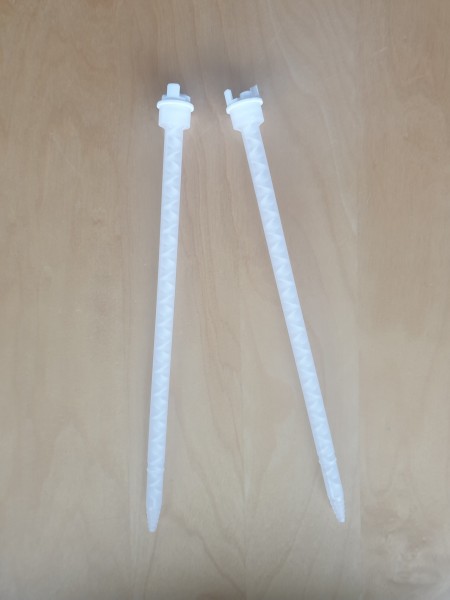
Overall, the present study reports the thrombosis process in the FDA benchmark nozzle using the numerical simulation method, and the primary findings may shed light on the effect of turbulence on thrombosis. We found that turbulence could change the shape of centrosymmetric thrombus to axisymmetric and high Reynolds number blood flow would delay or even prevent thrombosis. Five scenarios with different Reynolds numbers were carried out. Subsequently, the accuracy of the shear-stress transport turbulence model was confirmed in different turbulent flow conditions. The thrombus shaped like a ring was firstly observed in the FDA benchmark nozzle. The same setup was applied in the FDA nozzle to simulate the thrombus formation process. The thrombus model was quantitatively validated by referring to the latest thrombosis experiment, which was performed in a backward-facing step with human blood flow. We developed the hemodynamic-based thrombus model by considering the effect of platelet consumption. The objective of this study is to predict the thrombus formation process in the idealized medical device by coupling computational fluid dynamics and a macroscopic hemodynamic-based thrombus model. However, the thrombosis in the FDA nozzle has yet not been investigated. The Food and Drug Administration’s (FDA) benchmark nozzle model was designed to include the typical structure of medical devices. Thrombosis seriously threatens human cardiovascular health and the safe operation of medical devices. In this manner, fast but sufficiently accurate numerical predictions can be achieved for flow configurations of practical interest regarding medical applications. Our results show good agreement with the experimental measurements throughout the nozzle, demonstrating the good performance of the solver even in under-resolved simulations. The lattice Boltzmann results are compared with previously published inter-laboratory experimental data obtained by particle image velocimetry. To that end the food and drug administration's benchmark nozzle is considered at three different Reynolds numbers covering all regimes: (1) laminar at a Reynolds number of 500, (2) transitional at a Reynolds number of 3500, and (3) low-level turbulence at a Reynolds number of 6500.
Nozzle contour in gmsh full#
We assess here the performance of a lattice Boltzmann solver with full Hermite expansion of the equilibrium and central Hermite moments collision operator at higher Reynolds numbers, especially for under-resolved simulations. Dealing with such systems require both robust and efficient numerical methods. Due to this extreme sensitivity, any benchmark data of this geometry needs to include a very detailed characterization of both the conditions at the inflow and the throat, in order to enable relevant comparisons.Ĭontrary to flows in small intracranial vessels, many blood flow configurations such as those found in aortic vessels and aneurysms involve larger Reynolds numbers and, therefore, transitional or turbulent conditions. Our results highlight the very high sensitivity of this flow case to the inflow conditions and the disturbances at the throat, in particular when predicting the laminar-turbulent jet breakdown.

The predictive capabilities of a synthetic-eddy method (SyEM) and parabolic-inflow conditions at the inlet were tested and the results were compared with PIV data.

Nozzle contour in gmsh code#
Here we perform direct numerical simulations (DNS) of the flow through the FDA nozzle configuration, at Reynolds numbers based on throat diameter Re t = 500, 2000, 35, using the spectral-element code Nek5000. Furthermore, validation of computational results relied on previous experiments performed with particle image velocimetry (PIV), which also exhibited noticeable uncertainties. Previous studies have evaluated the potential of conventional turbulence models to predict the relevant flow features in the FDA nozzle, but have also been deemed inaccurate or exhibited high dependency on the numerical scheme.
Nozzle contour in gmsh verification#
To that end, the Food and Drug Administration (FDA) proposed a benchmark model of an idealized medical device to provide a common ground for verification and validation processes. In this context, the development of a rigorous and standardized CFD methodology is essential in order to improve the accuracy and ensure reliability in biomedical applications. Computational fluid dynamics (CFD) is nowadays a versatile tool used for flow characterization in diverse areas of industry and research, however the application in medical devices is less developed due to the high regulatory standards for safety purposes.


 0 kommentar(er)
0 kommentar(er)
